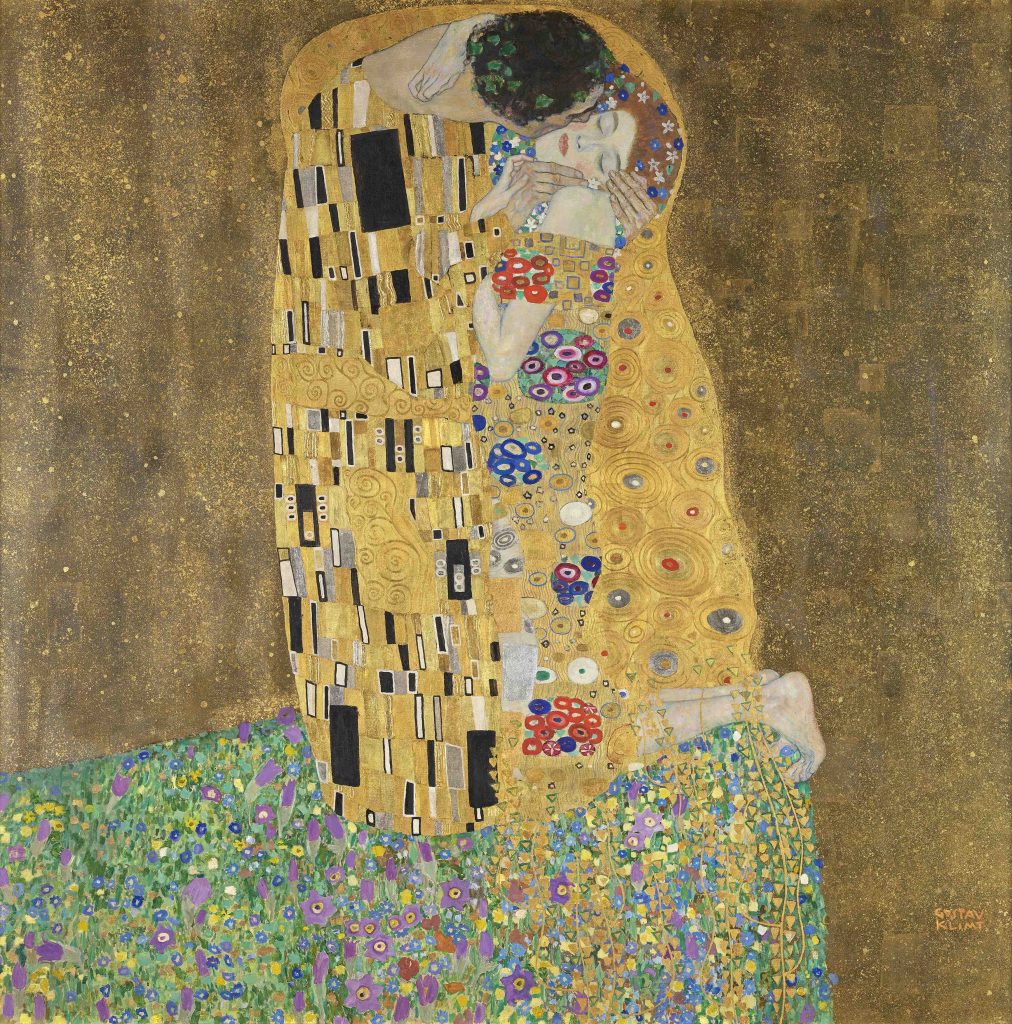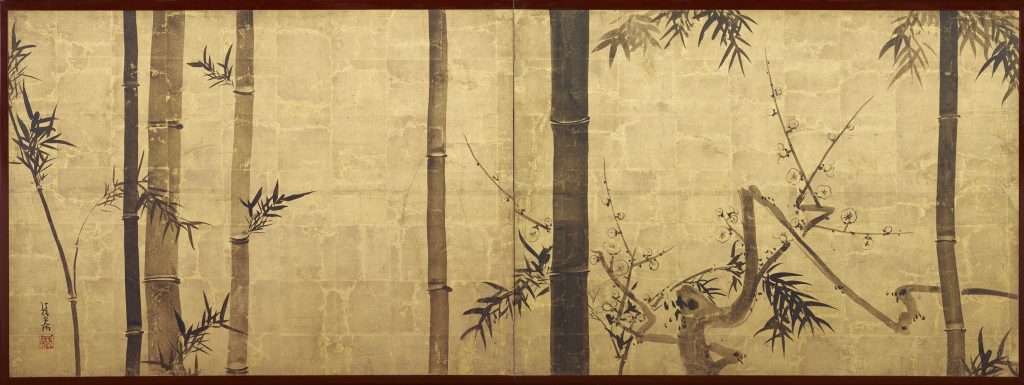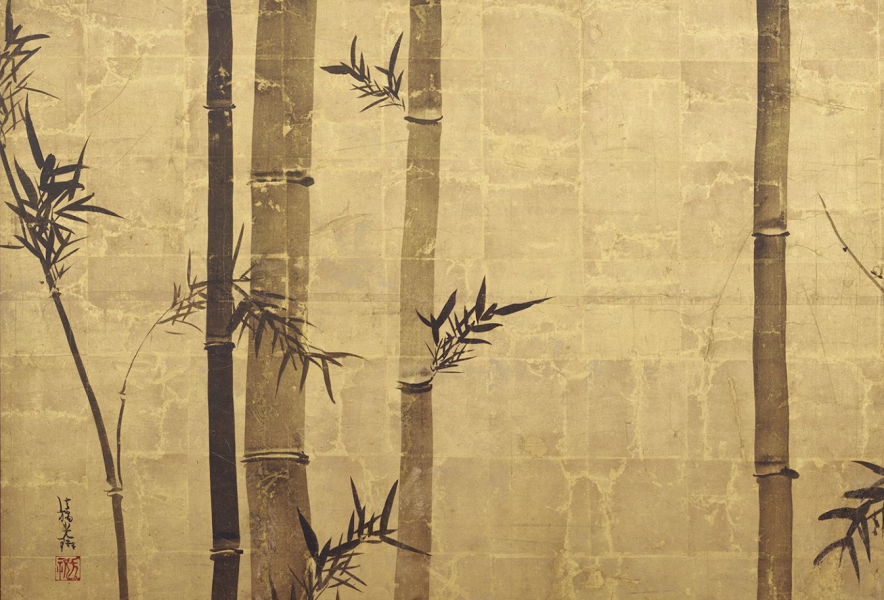Japonism was a Japanese cultural fad in Europe during the late 19th and early 20th centuries. It had a major influence on artists and the widespread appreciation of arts and crafts.
Gustav Klimt and Rimpa school
The influence of Japanese art also extends to architecture, interior design, and fashion. Austria’s Vienna Secession pursued a decorative Art Nouveau style influenced by Japanese art.
The influence of the Rimpa school can be seen in “The Kiss” by Gustav Klimt, a representative of this school. While Klimt’s paintings use a lot of gold leaf, flat, perspectiveless spaces, and characteristic painting techniques such as the flowing water and swirling patterns in Ogata Korin’s “Red and White Plum Blossoms”(紅白梅図屏風), the figures are depicted in a truly realistic manner.

Gustav Klimt “Der Kuss (Liebespaar)” (1908/Österreichische Galerie Belvedere)

Ogata Korin’s “Bamboo and Plum Tree”(竹梅図屏風/ 18th century / ColBase[https://colbase.nich.go.jp/])
World war ends the trend
In fashion, a unique style was born, incorporating the designs of the kimono, a traditional Japanese garment. Coats and dresses with silhouettes similar to the ukiyoe beauties’ uchikake and kimono outfits became popular among women. From this time on, clothing not only adapted to the shape of the body but also expanded the possibilities for freer expression.
In the 20th century, Japonism gradually declined in France, England, and other countries, and most of the items that came from Japan disappeared. In Japan, the rapid economic growth that followed the Meiji Restoration was accompanied by a rapid shift in production methods from craftsmen’s manual labor to machines, and awareness of the importance of exporting crafts declined. Later, the Second World War put an end to this trend.
See episode1: What is Japonism? How did it influence European art and culture?
See episode3: Kawaii is new Japonism: How does Japonism still influence the world?

